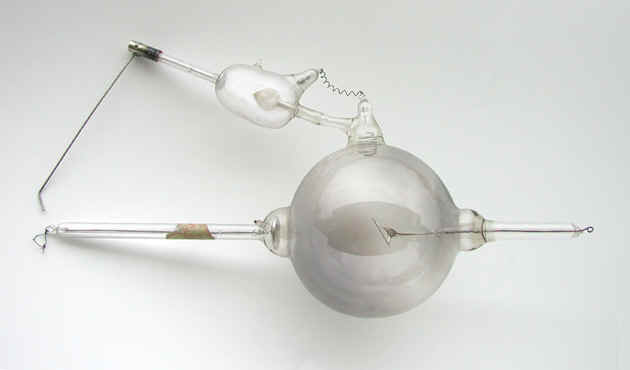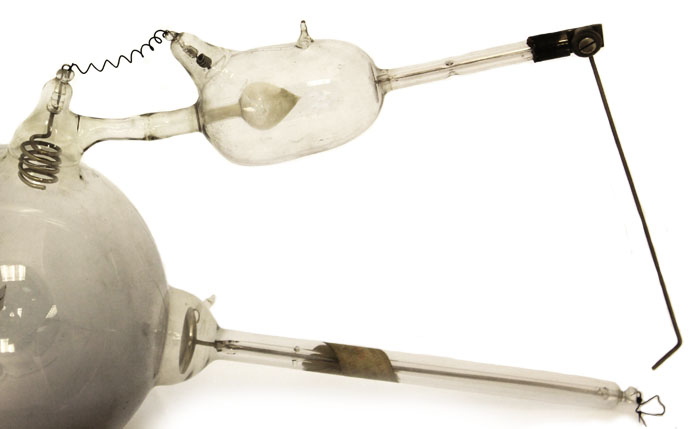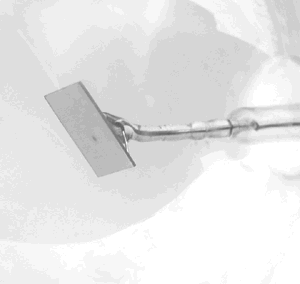Queen Self-Regulating Tube (1897-1905)

This particular tube was commonly known as the "Queen" tube because it was manufactured by Queen & Co. of Philadelphia—there was no "King" tube. While the Queen might (or might not) have been the very first self-regulated X-ray tube, it was easily the most famous. This is a jewel. A real treasure in the ORAU collection.
The company, founded in 1853 by James W. Queen, initially specialized in the importation of scientific equipment. But by 1900, they were best known for the self-regulating tube, developed by H. Lyman Sayen, that they manufactured "in-house." Queen & Company seems to have exited the x-ray business sometime around 1912, however they continued to operate for many years afterwards.
In the above photo, we see that the cupped aluminum cathode is housed inside a slightly enlarged portion of the glass arm attached to the left side of the bulb. The anode (target) is positioned in the center of the bulb and oriented at a 45 degree angle off the long axis of the tube. Note that the electrical terminals are loops on the end of the platinum wires that penetrate the ends of the glass arms. As is characteristic of many of the earliest tubes, metal caps are not employed.
The fame of the Queen tube was due to its unique and highly effective regulator. This regulator, possessing its own pair of electrodes, was unique because it was completely isolated from the tube. The source of gas used to increase the pressure inside the tube when the latter was too "hard" was the white chemical (potash) lining the small pointed bulb seen inside the regulator. Unlike the regulator proper, this small bulb is connected to the main bulb.

When the pressure inside the tube gets low, the resistance to the stream of electrons (i.e., cathode rays) to the platinum target increases. The result: a decrease in the output of X-rays. At some point, the resistance becomes so great that the electrons begin to jump the gap from the electrical contact for the cathode to the end of the wire lever connected to the regulator. As a result, a current now passes through the regulator from its cathode to its anode. Some of the electrons associated with this current strike the small pointed bulb and heat it. As the chemical inside the small bulb gets hot, it emits a gas that enters the main body of the X-ray tube. This increases the gas pressure in the tube and therefore its conductivity. When the pressure is just right, the current stops jumping the spark gap to the regulator and begins flowing, as it should, to the tube's anode (target).

This has what is known as a light anode. "Light anode" is a bit of a misnomer—technically it should be called a light anticathode. In any event, the low mass of the target could not withstand prolonged intensive use.
The paper label on the glass arm housing the cathode gives a patent date of 1897.
Size: ca. 15" long with a 5" bulb diameter
